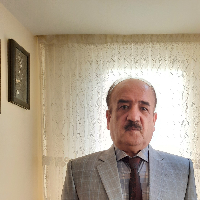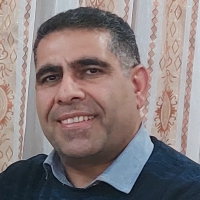Monitoring the Desertification Trend in the Areas Surrounding Lake Urmia (2000-2018)
According to the First World Conference on Deserts and Desertification, desertification refers to the destruction and degradation of natural ecosystems in arid, semi-arid, and sub-humid arid regions, which results in lower biomass production and the emergence of soil erosion (Ekhtesasi et al., 2011). Desertification results from natural factors such as climate variables and anthropogenic activities (Binal et al, 2018; Claado et al, 2002) and its impact on ecological processes is enormous and complex. Therefore, counteracting desertification is necessary to maintain long-term soil fertility in arid areas of the world. The present study aimed at evaluating desertification trends in the areas surrounding Lake Urmia in the period from 2000 to 2018. The main objectives of this study were 1) identification of the most suitable spectral index pair of desertification in the study area during the study period, taking into account the statistical relations; 2) mapping the desertification risk for the study period and the assessment of desertification trend in the study area by using the spectral biophysical indices such as normalized difference vegetation index (NDVI), surface albedo, Tasseled cap along with three components of brightness, Wetness, and greenness, and 3) identifying the most important factor that caused desertification in the study area by using the logistic regression model.
In the present study, first, three frames of Landsat 5 TM sensor and seven frames of Sentinel 2 images were downloaded and analyzed by ENVI5.3 and QGIS software for July 2000 and 2018. In the next step, spectral indices of desertification, including the normalized difference vegetation index (NDVI), surface albedo, Tasseled Cap (including three components of brightness coefficient, Wetness, and greenness) were extracted for the study period. Thereafter, using the statistical relations and the determination coefficient, the most suitable spectral index pair of desertification in the study area was identified. After the identification of suitable spectral index pairs, the selected spectral index pair was normalized and the desertification mapping was performed for the years 2000 and 2018 taking into account the obtained gradient by using the linear regression relation. Finally, by applying the statistical change detection method, changes in the class's risk were investigated and using the Logistic Regression model, the most effective factor in the occurrence of desertification was identified.
Discussion :
The normalized difference vegetation index (NDVI), wetness, and greenness were considered as the independent variables and surface albedo and brightness coefficient as dependent variables. The pairs of NDVI-Albedo spectral indicators have a positive correlation, but two spectral index pairs of humidity-brightness coefficient and brightness coefficient-greenness due to having a negative correlation were selected as the desertification index pairs and then normalized in the next step through the relevant relations. After mapping the desertification risk according to the index pairs of brightness coefficient-greenness and humidity-brightness, the combined map of desertification was obtained using line slope from the normalized relationship of the selected index pair and overlay function for the years 2000 and 2018 in 5 classes of non-desertification, weak, moderate, severe, and relatively severe desertification risks. To verify the results, using the classification algorithm, the Maximum Likelihood Algorithm and the Error Matrix were obtained, and the algorithm, with the accuracy of 91.96 and the kappa coefficient of 0.95 for 2000, and accuracy of 91.25 and a kappa coefficient of 0.89 for 2018 indicated a good correlation between the obtained results and the real-world data.
The results of this study were as follows: A) The two spectral index pairs of humidity-brightness coefficient and brightness coefficient-greenness were selected as the most suitable desertification indices in the study area, and therefore, the desertification risk maps were obtained through using this spectral index pair, B) The classification algorithm showed the highest degree of similarity with the accuracy of 91.96 and the kappa coefficient of 0.95 for the maps of 2000, and accuracy of 91.25 and a kappa coefficient of 0.89 for the maps of 2018, which indicated a good correlation between the obtained results and the real-world data, C) According to the results of statistical change detection analysis method, the areas of severe, relatively severe, and moderate desertification risk classes were increasing from 2000 to 2018, D) The desertification risk maps of 2000 and 2018 showed that the lands on the eastern coast, and especially on the southeast of the Lake Urmia, and the areas at the marginal edge of Tabriz Plain, overlooking the Lake Urmia were more sensitive to the desertification risk, and showed more severe degradation, compared to those on the west coast of Lake Urmia, F) Indicators such as underground water electric conductivity, chlorine index of underground water, Sodium adsorption ratio, drought index, Percentage of vegetation, had a high impact on the occurrence of desertification.
- حق عضویت دریافتی صرف حمایت از نشریات عضو و نگهداری، تکمیل و توسعه مگیران میشود.
- پرداخت حق اشتراک و دانلود مقالات اجازه بازنشر آن در سایر رسانههای چاپی و دیجیتال را به کاربر نمیدهد.



